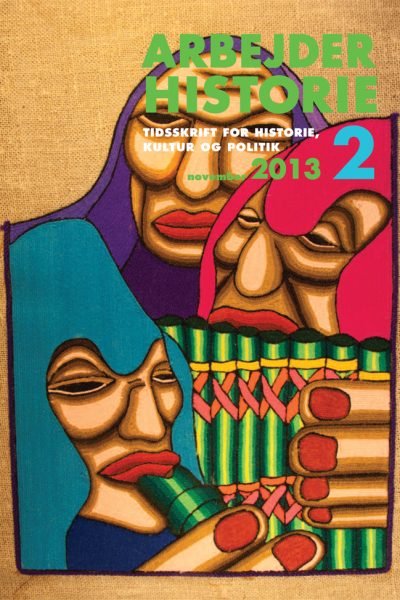Hovedstadsmetropolens sociale boligbyggeri
DOI:
https://doi.org/10.7146/arbejderhistorie.vi2.145061Resumé
Henning Bro: The Social Housing of the Capital Metropolis. Arbejderhistorie 2/2013, pp. 61-81.
By reintroducing a Danish Ministry of Housing, Urban and Rural Affairs and including the chapter of ”Good housing and better cities” in the coalition government agreement, ”Denmark holds together”, the Danish centre-left Government led by The Social Democratic Party at its inauguration in October 2011, once again focused on social housing policy as a significant point of operation. This followed a decade of measures taken by the former centre-right government to dismantle the social housing policy of the welfare state.
Nevertheless, in 2013 the Danish social housing sector totals 550,000 homes, equalling a fifth of the total Danish housing capacity or close to half of the total rental housing stock, and housing policy is still based on familiar instruments to the residential building industry: Subsidised residential construction and cooperative housing, rent adjustments and rent subsidies. As early as 90 years
ago these instruments constituted the corner stone of the social housing policy, which for the rest of the 20th century turned out to be
one of the structural pillars of the welfare state.
As the absolute largest urban population the housing policy was most extensively applied in the Capital, Copenhagen and Frederiksberg, and subsequently to their suburbs. Central to this survey paper is the development of the social housing policy from the
middle of the 19th century until the millennium, its primary focus is state subsidised residential construction in the capital metropolis,
its share of the residential building market and building stock plus the main features of the building designs. In his doctoral thesis the
author of this paper addressed state and municipal social housing policy operations from the breakthrough of industrial capitalism around the middle of the 19th century until the foundation of the welfare state was laid during the first world war and in the first part of the interwar period. The main conclusions of the thesis was also published in the paper: Henning Bro: Housing: From Night Watchmann State to Welfare State Danish Hou This paper thus shows, that in 1916-1945 nearly half of the residential construction in
the Capital was provided by the municipals and other publicly subsidised residential construction, whereby this construction totalled
25% of the housing at the end of The Second World War. As to the quality, the publicly subsidised housing construction resulted in a
substantially improved standard of housing quality in the form of larger flats, toilets, bathrooms and central heating facilities for
flats plus spacious courtyards with landscaped garden areas, as well as housing blocks and terraced houses. In the middle of the 20th century the Capital was fully developed and had reached a population of almost 900,000. In its outskirts, a growing belt of suburbs emerged with a population of 300,000 in the first half of the century, so in 1950 the population of the Capital reached 1.2 million. Fifty years later the capital metropolis was able to muster 1.7 million residents, but with the simultaneous depopulation and deindustrialisation of the inner city, the population growth was focused in a massive suburban population growth of 800,000 citizens.
This situation was the basis for extensive housing construction, of which publicly subsidised building associations provided nearly
50%. These flats were continuously enlarged and modernised, and the building design developed from blocks, attached houses and
small shopping plazas to high-rise buildings, blocks or high-density/low-rise housing at the suburban centres, which emerged with adjacent shopping centres and public institutions at metropolitan train stations. This picture of welfare suburbia with comprehensive public housing and extensive numbers of industrial jobs was most prominent in the western and north-western municipalities governed by social democrats. In the affluent right wing governed suburban municipalities in the catchment areas, the number of blue
collar jobs and social housing blocks were more modest, whereas detached family homes and recreational areas were predominant.
Translated by communications consultant Pia Hartvig Jacobsen, Frederiksberg City Archive, 2013.
Downloads
Publiceret
Citation/Eksport
Nummer
Sektion
Licens
Copyright (c) 2013 SFAH og forfatterne

Dette værk er under følgende licens Creative Commons Navngivelse – Ikke-kommerciel – Ingen Bearbejdede Værker (by-nc-nd).


